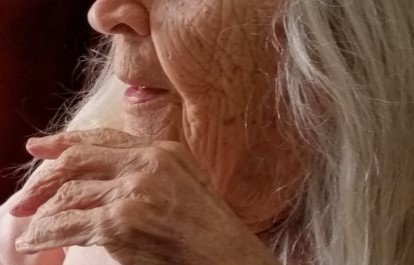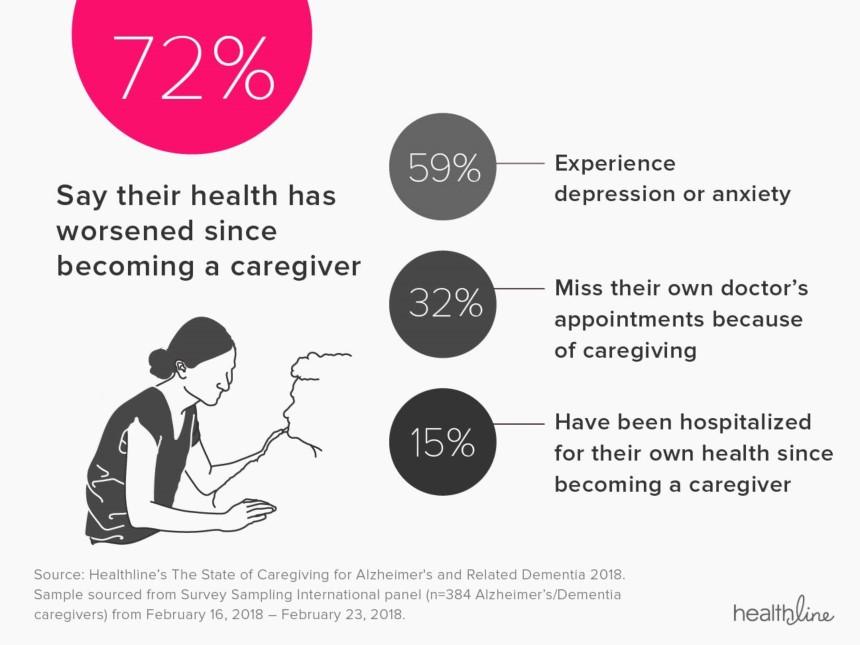The Caregiver’s Voice curated article excerpts in June features Perennials, not seniors or elders; how to live well in your own home in your “perennial” years; and Healthline’s 2018 report on the state of caregiving for people with dementia. Finally, what the heck is “integrative complexity” and how is it an advantage for older people (perennials)?
Meet the Perennials
Elders are not senior citizens or over-the-hill and should not be defined by age, proposes, Gina Pell, Content Chief at The What in a piece on Medium in the fall of 2016. [2/14/2024 TCV Update: The piece on Medium was “suspended” and recently the URL to The What piece became inaccessible.]
Instead, people who’ve been around a while, should be viewed in terms of mindset.  “We are ever-blooming, curious people of ALL ages who know what’s happening in the world, stay current with technology, and have friends of all ages.” The term Perennial was resurrected in a Washington Post opinion-piece, early last winter by Laura L. Carstensen, director of The Stanford Center on Longevity – In search of a word that won’t offend ‘old’ people. I found Carstensen’s sharing of the anti-ageism group, the Gray Panthers co-founder Maggie Kuhn’s response to being introduced remarkable. Laura writes, “Language matters: We need a term that aging people can embrace. For one, ‘perennials’ makes clear that we’re still here, blossoming again and again. It also suggests a new model of life in which people engage and take breaks, making new starts repeatedly.”
“We are ever-blooming, curious people of ALL ages who know what’s happening in the world, stay current with technology, and have friends of all ages.” The term Perennial was resurrected in a Washington Post opinion-piece, early last winter by Laura L. Carstensen, director of The Stanford Center on Longevity – In search of a word that won’t offend ‘old’ people. I found Carstensen’s sharing of the anti-ageism group, the Gray Panthers co-founder Maggie Kuhn’s response to being introduced remarkable. Laura writes, “Language matters: We need a term that aging people can embrace. For one, ‘perennials’ makes clear that we’re still here, blossoming again and again. It also suggests a new model of life in which people engage and take breaks, making new starts repeatedly.”
How to Age Well and Stay in Your Home
[TCV Update 2/14/2022 NYT article, subscription required] “Dr. Ezekiel Emanuel, a 60-year-old oncologist and bioethicist, argues that we might all be better off, himself included, if he dies at 75,” writes Jane E. Brody in a New York Times article. And yet, what will it take to remain in our own homes as we grow older? Since studies show that most people prefer to age in their homes; our health and physical ability to live independently will determine how successful we are. Brody offers helpful tips from Lynda G. Shrager, an occupational therapist and author of Age in Place: A Guide to Modifying, Organizing, and Decluttering Mom and Dad’s Home.”
The State of Caregiving for Alzheimer’s and Related Dementia 2018
 Caregivers provide an average of 36 hours a week of unpaid care. Of these, 67% are women. The majority of caregivers sacrifice their own health, finances, and family dynamic to care for their loved ones with nearly three-quarters reporting that their own health has declined since taking on care responsibilities. Click on the title above for convenient links to an overview of findings; caregiver profile; cost of Alzheimer’s relating to caregiver health, career, and finances; integrating technology and telehealth; Alzheimer’s progression and what to expect; research, prevention, and early diagnosis.
Caregivers provide an average of 36 hours a week of unpaid care. Of these, 67% are women. The majority of caregivers sacrifice their own health, finances, and family dynamic to care for their loved ones with nearly three-quarters reporting that their own health has declined since taking on care responsibilities. Click on the title above for convenient links to an overview of findings; caregiver profile; cost of Alzheimer’s relating to caregiver health, career, and finances; integrating technology and telehealth; Alzheimer’s progression and what to expect; research, prevention, and early diagnosis.
Studies Show That People Who Have High “Integrative Complexity” Are More Likely to Be Successful
Fascinating article about how our mindsets resulting from years of teaching and management philosophies of being EITHER detail oriented or globally visionary are tossed by the wayside. Author Michael Simmons writes, “Many of the world’s top entrepreneurs — like Bill Gates, Steve Jobs, and Elon Musk — along with Nobel Laureates have a common, rare skill called “integrative complexity.”
Simmons describes the results of four studies “on why integrative complexity [IC] is a key to success, personal growth, and cultural polarization.” He then offers five implications of how we can develop IC – such as fostering counter-intuition as we try to understand why our intuition may guide us in the wrong direction. He cites examples such as people’s belief that the sun revolved around the earth (it rose and then set each day as the earth stood still). He also suggests we “run toward tension” instead of running away from controversy.









How timely an article about aging in place, Brenda! For a variety of reasons, most of us want to stay in our familiar homes among family, neighbors, and life-long friends. The Everest-high prices of assisted living and/or nursing homes is a major factor. And even though home modification can be costly, the cost is minor compared to the $50 – 80,000 annual cost of buying into the “senior living” industry. Underscore industry.
My colleague, Mike Belleville, and I have developed a presentation to be delivered at the 33rd Alzheimer’s Disease International conference July 26-9, 2018 in Chicago, IL [https://www.adi2018.org]. Our topic is using technology at home to ease caregivers’ burdens and improve the lives of people with dementia as they live their lives at home. A person need not move away to live in a so called “Smart Home.” Did you know you can buy kits to help you retrofit your own home?
We sell nothing, promote no specific product, and provide only ideas and hope for leading somewhat easier lives when confronted with dementia at home. Your readers could pick up an idea or two.
Hoping all is well with you. Take care!
Carole, there are many ways, as you know, to look at this… and adult children who live a good distance away who are worried for their parents might see an assisted living option as most doable for Mom or Dad.
Still, I do hope your initial work with Mike and the other presenters gain traction at the ADI conference later this month. I’ve included the link to your topic: using technology at home to ease caregivers’ burdens and improve the lives of people with dementia.
https://www.adi2018.org/sessions/plenary-3-technology-innovation-and-entrepreneurship/ I’d love for you to present us with an article – a brief report and feedback from the conference attendees following this presentation.